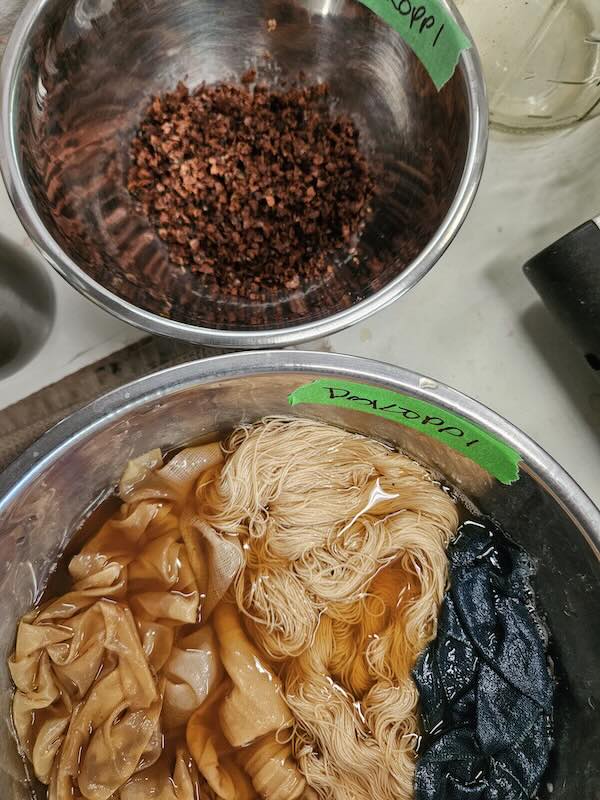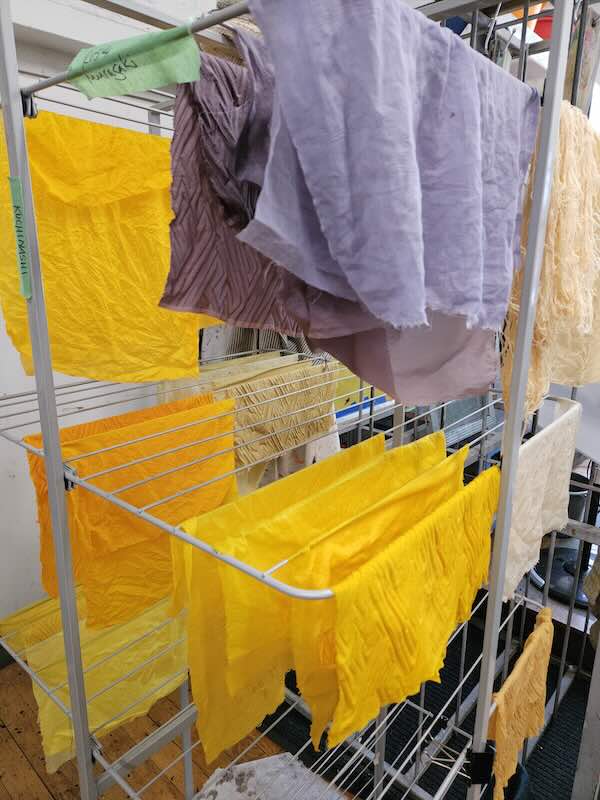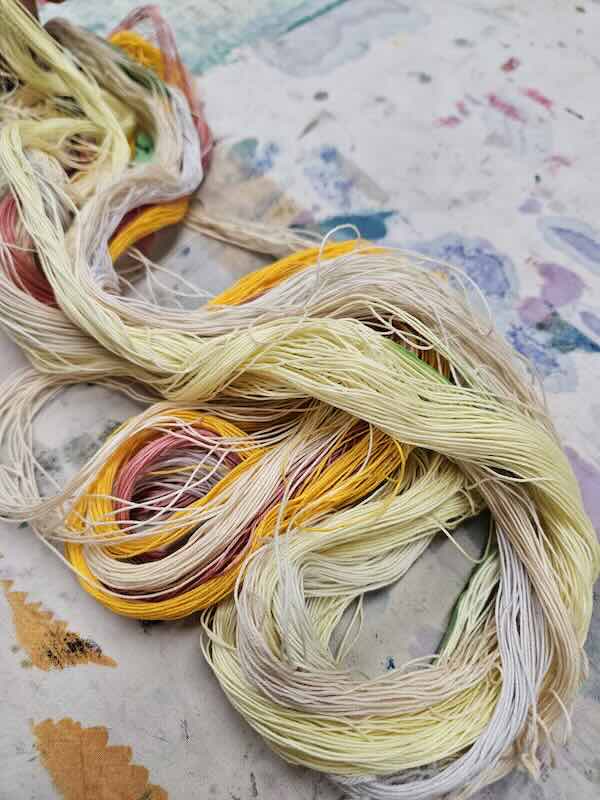Thank you to Rachel MacHenry and Gitte Hansen of Contemporary Textile Studio Co-operative for the lovely photos!
I taught a one day workshop on middle mordant using Japanese dyes in Toronto on Friday, and had a great time with the students. This was the first time we’d tried the technique using only Japanese dyes that we extracted, and we also had a side trip into kakishibu which didn’t require any mordant, but made a beautiful shade.
I’ve written about middle mordanting before: Catharine Ellis has a nice recipe and procedure in her book and Studio Notes, and I’ve also seen this process from a Japanese dyer. The differences in our technique are that we used raw Japanese dyestuffs that we extracted and then dyed back and forth, and we did not rinse our fabric between dips. We also tried the technique on both cellulose and protein fibers, and even overdyed a piece of indigo dyed linen to create lovely greens and a purple. Some of the students also created an iron bath and dipped their fabric between iron and the dye bath to obtain even more shades.

How to Middle Mordant
Step 1 – Weigh out and note the dry weight of your unmordanted, silk fabric (scoured if necessary). Then soak the silk fabric in water to wet out the fiber.
Step 2 – Prepare an alum bath (we used aluminum potassium sulfate), but aluminum sulfate will work equally well here. We used 20% per liter of water, or 20g per liter of water. Dissolve the aluminum sulfate in a small amount of very hot water, then add to a container that is large enough to hold the fabric. For most of our mordant baths, we used 3 liters of water and 60g of aluminum potassium sulfate.
Step 3 – Prepare a dye bath from raw dyestuffs. We used approximately 100% on the wof, but some dyestuffs required 200% and others as low as 25%. Check on the recommended percentages for your dyestuff. If you aren’t able to find a recommended percentage, start with 100% wof. Add a small amount of water and gently simmer the dyestuff for 15 minutes. Drain and reserve the dyestuff and then repeat the simmer process with fresh water. If there is still a lot of dye color in the dyestuff, repeat the simmer process with more fresh water. Drain the dye liquid into a container large enough so the fabric can move freely in the dye bath. You can save the dyestuff and dry it for additional uses such as bundle dyeing or further extractions. The liquid is your dye bath. Allow it to cool a little so you don’t burn your hands.
Step 4 – Take the wetted out silk fabric and immerse in the dye bath. Swish it around for 10-15 minutes. The fabric will look a little pale.
Step 5 – Remove the silk from the dye bath, gently squeeze out excess dye and immerse it in the mordant bath. Don’t rinse it or you’ll wash away the unattached dye. Swish it around for 10-15 minutes.
Step 6 – Remove from the mordant bath, then gently squeeze it and return it to the dye bath, swishing it around in the dye bath. You should start to see that the fabric becomes darker and richer colored.
Repeat Steps 4-6 until the fabric is the shade that you want, then rinse and hang to dry away from direct sunlight.


For more information and some of the dyes we used
Contemporary Textile Studio Co-operative in Toronto, Canada
Mordant Monday: Middle Mordant Magic from my teaching at Sanborn Mills Farm
Tangara Mangrove bark brown dye
Kihada (Amur Cork Tree) green-yellow dye
Ukon (Turmeric Chips) bright yellow dye
Kariyasu (Silver Grass) yellow dye
Kakishibu (Fermented persimmon dye)
